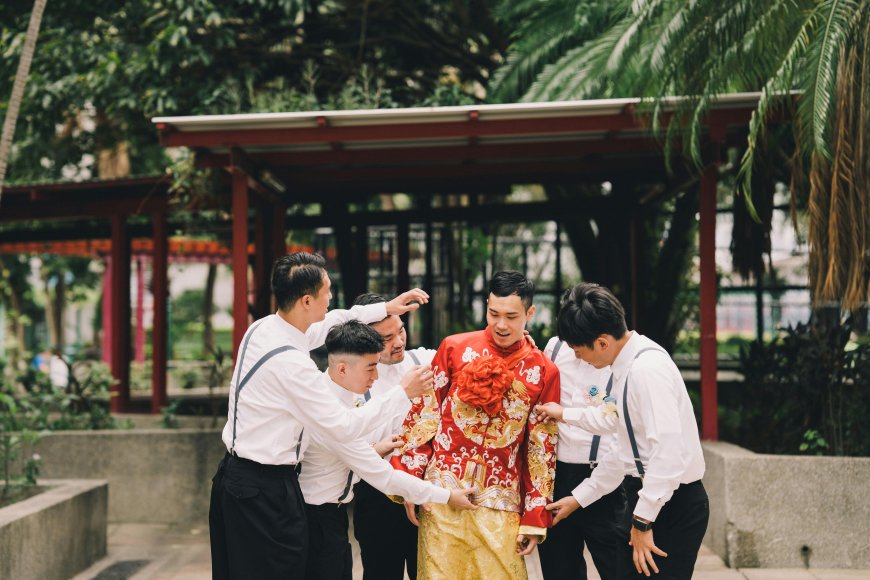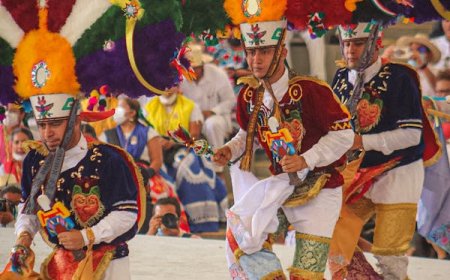Traditional clothing and attire customs in China
The traditional Chinese attire reflects the richness of China's cultural heritage and its social and regional diversity. This attire is distinguished by its intricate details, vibrant colors, and luxurious fabrics used in its production. Traditional Chinese attire is considered an integral part of important celebrations and events such as weddings and traditional festivals. Thanks to the beauty of its designs and its rich heritage, traditional Chinese attire remains attractive to people both within and outside China, where it is considered a symbol of pride and Chinese identity.

The traditional Chinese attire reflects the richness of China's cultural heritage and its social and regional diversity. This attire is distinguished by its intricate details, vibrant colors, and luxurious fabrics used in its production. Traditional Chinese attire is considered an integral part of important celebrations and events such as weddings and traditional festivals. Thanks to the beauty of its designs and its rich heritage, traditional Chinese attire remains attractive to people both within and outside China, where it is considered a symbol of pride and Chinese identity.
Traditional clothing and attire customs in China
The history of traditional Chinese attire dates back thousands of years, forming an integral part of China's history and culture. This traditional attire reflects the diversity of cultures and traditions across different regions of China, making it culturally and historically intriguing.
In the early periods of Chinese history, clothing reflected social classes and status, with strict rules governing what each class should wear. Over time, designs and styles evolved, influenced by other cultures such as Buddhism, Tibetan, and Mongolian.
During the Warring States period (475-221 BCE) and the Three Kingdoms period (220-280 CE), clothing began to take on different forms, and designs became more diverse. In the Tang (618-907 CE) and Song (960-1279 CE) dynasties, clothing underwent significant developments, with luxurious fabrics and intricate designs becoming essential elements of traditional Chinese attire.
Traditional Chinese attire was also influenced by later periods of Chinese history, such as the Northern and Southern Dynasties period (420-589 CE) and the Imperial China period (1644-1912 CE). With the influence of foreign occupations and cultural exchanges, traditional Chinese attire witnessed numerous developments and changes but retained its authentic and rich essence.
Therefore, the history of traditional Chinese attire is an exciting and complex journey, reflecting the evolution of Chinese society and culture over the ages, and showcasing the deep values and traditions that distinguish Chinese culture.
The importance of traditional Chinese attire in preserving cultural identity
The significance of traditional Chinese attire in preserving cultural identity manifests in several historical, cultural, and social aspects. Traditional attire is considered an essential part of China's ancient heritage, reflecting the values and traditions that have developed over the ages.
First and foremost, traditional Chinese attire is a significant symbol of China's national and cultural identity. Through its distinctive designs and patterns, traditional attire represents pride and belonging to the rich and diverse Chinese culture.
Secondly, traditional Chinese attire contributes to raising awareness of China's cultural heritage and history, reflecting the customs, traditions, and values that have distinguished Chinese society throughout history. Therefore, traditional attire serves as a means to transmit ancestral stories and teachings to new generations.
Thirdly, preserving traditional Chinese attire promotes a sense of belonging and openness to others. Wearing traditional attire is a source of pride for Chinese people, while foreigners embracing traditional attire is seen as an expression of their respect and appreciation for Chinese culture.
In this way, traditional Chinese attire remains a crucial focal point in preserving Chinese cultural identity and enhancing cultural understanding and exchange between cultures. The continuity of this traditional attire reflects the continuity of authentic Chinese traditions and values across generations.
Designs of traditional Chinese attire
Designs of traditional Chinese attire reflect the richness and diversity of Chinese culture, characterized by intricate details and deep cultural symbols. Traditional Chinese attire typically consists of several pieces that complement the body in a unique style that reflects the evolution of fashion and artistic taste across the ages.
One of the prominent elements of traditional Chinese attire design is the use of vibrant and bright colors, reflecting vitality and the spirit of joy. The colors used vary depending on the occasions and events, with red often used in weddings symbolizing good luck and happiness, while blue may be used in formal occasions and special ceremonies.
In addition to colors, traditional Chinese attire designs are distinguished by artistic embroideries and delicate embellishments, which express the craftsmanship and artistic heritage of China. Embroidery patterns and embellishments vary across regions and Chinese cultures, making each design unique.
Traditional Chinese attire designs are also renowned for their unique cuts and traditional shapes, such as the qipao and long skirt for females, and the loose shirt and wide pants for males. These cuts reflect the simplicity and traditional elegance of Chinese attire, while maintaining comfort in wear and suitability for climate and movement.
Traditional Chinese attire designs combine beauty, history, and culture, making them artistic masterpieces that are an integral part of the rich Chinese heritage and uniquely express its cultural identity.
Fabrics of traditional Chinese attire
Fabrics of traditional Chinese attire are an important part of its beauty and uniqueness, serving as a key factor in defining its shape, quality, and style. The variety of fabrics used in traditional Chinese attire is extensive, encompassing a wide range of natural and synthetic materials, allowing for a great diversity in options and styles.
One of the most famous types of fabric used in traditional Chinese attire is silk, which is considered a symbol of luxury and elegance. Chinese silk is known for its softness and natural luster, making it ideal for crafting dresses, skirts, and shirts in traditional fashion.
In addition to silk, other fabrics such as cotton and linen are used in the making of traditional Chinese attire. These fabrics are characterized by their durability, strength, and ability to absorb sweat, making them perfect for everyday wear and hot weather.
Furthermore, designs of traditional Chinese attire sometimes rely on fabrics embroidered with various types of threads, adding a touch of beauty and uniqueness to the attire. Embroidery is used to decorate collars, cuffs, and buttons, with shapes and patterns varying according to the region and local traditions.
In this way, the diversity of fabrics used in traditional Chinese attire caters to the tastes and cultural needs, contributing to imparting a unique character and distinction to this attire that reflects the richness and diversity of Chinese culture.
Weddings and celebrations
In Chinese culture, wedding ceremonies and the accompanying celebrations are considered among the most significant social and cultural events, characterized by unique traditions and distinctive details that include traditional Chinese attire and special rituals.
Chinese wedding ceremonies begin with the engagement phase, during which the parents of the couple determine a suitable wedding date and establish the conditions of the marriage. Following this, the groom's family visits the bride to present gifts and congratulations.
The big day of the wedding itself follows, with the bride and groom wearing luxurious traditional Chinese attire adorned with embroideries and decorations. The colors and designs of the attire vary according to the region and local traditions, but red remains the most common color for its symbolism of happiness and good fortune.
Traditional Chinese wedding ceremonies include several rituals, such as the exchange of gifts between the bride's family and the groom's family, prayers and religious rituals in temples, and tea ceremonies that demonstrate the bride's respect for the groom's family.
Subsequently, the main wedding ceremonies follow, such as the exchange of vows and promises, cake cutting, and a feast at the grand wedding reception that gathers family and friends.
Traditional Chinese attire is considered an essential part of wedding ceremonies and celebrations in Chinese culture, reflecting the luxury, elegance, and ancient traditions that distinguish this important occasion in individuals' lives.
Contemporary developments in traditional Chinese attire
Contemporary developments in traditional Chinese attire witness noticeable transformations reflecting changes in society, culture, and fashion. This evolution reflects a desire to preserve Chinese cultural heritage while adapting to modern challenges and changes in the world.
The latest developments in traditional Chinese attire include changes in designs and the use of new materials and technology in production processes. For example, modern fabrics such as nylon and polyester have been used in some new designs of traditional Chinese attire, adding a touch of modernity and comfort in wearing.
Additionally, contemporary developments in traditional Chinese attire have seen the use of digital printing techniques and computerized embroidery to add intricate details and beautiful embellishments to the clothing. These modern techniques add artistic touches to traditional attire and attract the younger generations to embrace it.
Furthermore, developments in cutting and design styles for traditional Chinese attire can be observed, with new and innovative ideas applied to give the clothing a modern and elegant look that resonates with the tastes of modern generations.
It is important to note that these contemporary developments in traditional Chinese attire do not diminish its cultural and historical value but rather enhance its appeal and spread worldwide. They embody China's engagement with the modern world while retaining its deep cultural roots in its traditional attire.
The impact of traditional Chinese attire on global fashion
The impact of traditional Chinese attire on global fashion has seen a significant increase in recent years, with elements and designs of traditional attire becoming an integral part of global fashion trends. This phenomenon can be attributed to several factors including cultural influence, cultural openness, and innovation in the fashion world.
Firstly, traditional Chinese attire reflects a cultural richness and diversity that deserves respect and attention. It carries within it a rich history and ancient traditions, serving as a source of inspiration for designers and fashion models around the world.
Secondly, traditional Chinese attire contributes to adding a touch of uniqueness and authenticity to the global fashion scene, offering unique patterns and designs not found in traditional Western fashion.
Thirdly, with the development of the fashion industry and the widespread use of social media, Chinese culture and traditional attire have become a topic of global interest, prompting global fashion brands to incorporate elements of traditional Chinese attire into their designs.
The impact of traditional Chinese attire on global fashion embodies the spirit of cultural collaboration and mutual appreciation between cultures. Thanks to this exchange and mutual influence, traditional Chinese attire remains an integral part of elegance and distinction in the world of global fashion.
Summary
The traditions of dress and traditional attire in China are an integral part of the country's rich and diverse cultural heritage. Traditional Chinese attire is considered a part of the national and cultural identity, reflecting a deep history and ancient traditions. It is characterized by vibrant colors, intricate designs, and cultural symbols carried by fabrics and embroideries. Throughout the ages, traditional attire has witnessed contemporary developments, including the use of modern materials and advanced manufacturing techniques to give it a modern look. Traditional Chinese attire serves as a source of inspiration for global designers, influencing global fashion and enhancing cultural exchange between cultures.
Sources
What's Your Reaction?




































































































































































